This post may contain affiliate links. That means if you click on a link and make a purchase, I may make a small commission at no additional cost to you. Thank you for your support!
Oh, afternoon tea! One of my favorite things! From formal, multi-course affairs, to casual cream teas – I love them all! But for me, there is something extra special about a simple cream tea. It offers a luxurious pause from the afternoon, without being overly decadent or taking hours on end. It’s perfect for sharing with a friend, or just as perfect for escaping to a quiet corner and enjoying with a good book.
In case you don’t know, cream tea is simply tea served with scones, jam, and clotted cream. Perfection!
Afternoon tea vs high tea vs cream tea
We here in the US are woefully undereducated when it comes to tea. High tea, afternoon tea, cream tea, Lipton tea – it all sounds the same, right?! Well, not the Lipton part, anyway! 😉 Until I began researching tea in the last few years, I couldn’t have told you the difference between afternoon tea, high tea, cream tea, or any of the other type of tea!
So, just in case your tea knowledge is a little lacking, as mine was, here is a super brief overview for your culinary pleasure –
Afternoon tea is a fancy and elegant respite from the afternoon, complete with fine china, delicate sandwiches, and dainty pastries and cakes. It’s sometimes called low tea, because it is often enjoyed while relaxing in low, comfortable chairs, sitting around low tables, such as a coffee table, as you might find in an aristocratic drawing-room.
High tea, on the other hand, is more of a hearty meal with savory dishes, traditionally taken by workers at the end of the workday. In contrast to the low, afternoon tea, high tea was enjoyed at a higher dining room table, or, I would like to imagine, a pub table.
The Daily Telegraph in England, in an 1893 article, gives us this lovely description of high tea, “A well-understood ‘high tea’ should have cold roast beef at the top of the table, a cold Yorkshire pie at the bottom, a mighty ham in the middle. The side dishes will comprise soused mackerel, pickled salmon (in due season), sausages and potatoes, etc., etc. Rivers of tea, coffee, and ale, with dry and buttered toast, sally-luns, scones, muffins and crumpets, jams, and marmalade.”
Cream tea is essentially a simplified afternoon tea, with freshly baked British-style scones (like the recipe below), jam (usually strawberry), and clotted cream (a heavenly bit of luxuriousness that tastes like the divine cross between butter and whipped cream – you can read all about it at
TasteOfThePlace.com/ClottedCream).
Both cream tea and clotted cream originated in Cornwall and Devon, in western England. The two – Cornwall and Devon, that is – are greatly divided on the matter. Where did the cream tea originate? Who really invented clotted cream? Which should go first on the scone – cream or jam? Serious topics for debate, to be sure!
Debates aside, I think we can all agree that cream tea is delicious!

About the scone recipe
This recipe for scones comes to us from my friend, Debbie Thorpe, from Cornwall. She shared her tasty recipe with me for the Great Britain chapter of my new Taste Of The Place cookbook. If you want to learn more about the cookbook, head over to Tasteoftheplace.com/buythecookbook.
These are not the heavy, triangular, sugar-bomb bricks that most people in the US think of when ordering a scone at their local coffee shop. No, these are light and fluffy, with just a touch of sweetness. They’re somewhat similar in look and texture to a southern-style biscuit and are perfect for slathering with clotted cream and jam.
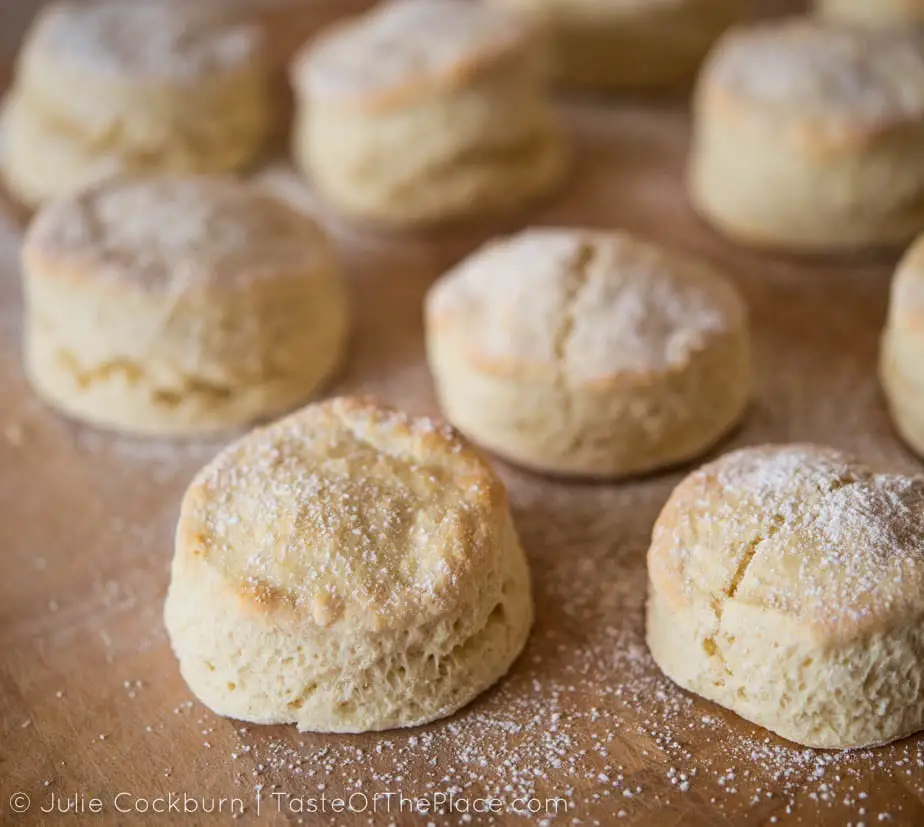
The recipe calls for self-rising flour. I like to use the King Arthur brand. I’ve also played around with making my own, but tend to get inconsistent results. If you want to give making your own a go – the formula is 1 1/2 teaspoons baking powder + 1/4 teaspoon salt to each 1 cup of all-purpose flour.
Plan to make your scones just before serving. Scones are divine hot out of the oven and will keep well for several hours – but not much longer. Second-day scones are OK, but nothing like the delicious treats they are when first made.
Debbie, the recipe contributor, suggests that you can mix this recipe up by adding a handful of golden raisins, dried berries, or cranberries. Or for a savory scone, replace the sugar with 1 1/2 to 2 ounces of grated cheese.
Oh, and Debbie’s opinion on the great jam or clotted cream first debate? The Cornish way, of course! Jam first, and then cream!
About Debbie
“Food has always played a major part in my life. From a young age, I was encouraged to join in, sow seeds, fish and forage. That nostalgia is now being passed down to my own children. I qualified as a chef in my twenties and still love every moment and food memory created. As a mother, I am proud to be able to share this with my family, and as a Jamie Oliver Food Revolution Super Ambassador, I am proud to share this with my community.
You can find me at Chef Debbie Thorpe“
Print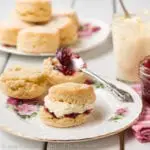
Fresh British scones for a cream tea
- Yield: 12 to 18 scones 1x
Description
Light and fluffy, with just a hint of sweetness, fresh British scones are perfect for slathering with clotted cream and strawberry jam.
Ingredients
- 3 1/2 cups self-rising flour, plus extra for dusting
- 2 rounded teaspoons baking powder
- 5 tablespoons unsalted butter, softened
- 1/4 cup sugar
- 2 large eggs
- Roughly 1 1/4 cup whole milk
- Powdered sugar, for garnish
Extras
- Strawberry jam, to serve
- Clotted cream, to serve
Instructions
- Preheat the oven to 400°F
- Sift the self-rising flour and baking powder into a large bowl. Use your fingers to rub in the softened butter, until it reaches the consistency of fine breadcrumbs. Stir in the sugar.
- In a 2 cup or larger measuring jug, beat the eggs together. Add enough whole milk to reach 1 1/2 cups. Whisk to incorporate.
- Set aside 1 1/2 tablespoons of the egg and milk mixture for brushing on the scones before baking.
- Add the remaining egg and milk mixture to the dry ingredients, and using your hands, very gently mix until just incorporated. The mixture will be slightly sticky.
- Turn the dough out onto a well-floured work surface. Dust your hands and the surface of the scone mixture with flour, and using your hands, very gently flatten the dough into a 1/2 to 1-inch thick disk. Don’t use a rolling pin to flatten the dough, as that can cause the scones to be too flat and dense. Cut out circles with a 2 1/2 to 3-inch biscuit cutter. Very gently work any extra bits back into a 1/2 to 1-inch thick disk, and cut additional circles with the biscuit cutter.
- Place the scones about 1 inch apart on a parchment paper-lined baking sheet, and brush with the reserved egg and milk mixture.
- Bake for 10 to 15 minutes, or until lightly browned. Be sure not to open the oven door during the first 10 minutes, as the loss of heat can cause the delicate scones to not rise properly.
- Remove from the oven, and allow to cool slightly.
- Dust with powdered sugar, and serve with clotted cream and strawberry jam.
Recommended Equipment and Goodies
 Buy Now →
Buy Now → Notes
This recipe for scones comes to us from Cornwall. My friend, Debbie Thorpe, shared her tasty recipe with me for my upcoming cookbook.
These are not the heavy, triangular, sugar-bomb bricks that most people in the US think of when ordering a scone at their local coffee shop. No, these are light and fluffy, with just a touch of sweetness. They’re somewhat similar in look and texture to a southern-style biscuit and are perfect for slathering with clotted cream and jam.
The recipe calls for self-rising flour. I like to use the King Arthur brand. I’ve also played around with making my own, but tend to get inconsistent results. If you want to give making your own a go – the formula is 1 1/2 teaspoons baking powder + 1/4 teaspoon salt to each 1 cup of all-purpose flour.
Plan to make your scones just before serving. Scones are divine hot out of the oven and will keep well for several hours – but not much longer. Second-day scones are OK, but nothing like the delicious treats they are when first made.
Debbie, the recipe contributor, suggests that you can mix this recipe up by adding a handful of golden raisins, dried berries, or cranberries. Or for a savory scone, replace the sugar with 1 1/2 to 2 ounces of grated cheese.
- Category: Tea, Dessert
- Cuisine: British
Related recipes and articles
Beginner’s Guide To Brewing Loose Leaf Tea
Learn all the ins and outs to brewing a perfect cup of loose leaf tea…
How to Put Together a British Style Cream Tea
Cream tea is simply tea served with scones, jam, and clotted cream. It is a quintessentially British tradition and is a delightful and indulgent treat that is perfect for any occasion. Read on to learn more about it and how to make it!
What is clotted cream? Recipe, substitutes, and more
Clotted cream is a rich and indulgent dairy product, originating in England, which is often enjoyed with scones and jam during afternoon tea or cream tea. It has a thick and velvety texture that is similar to custard or butter, and a naturally nutty, slightly sweet flavor. The process of making clotted cream involves slowly heating heavy cream and then allowing it to cool. As the milk cools, a thick layer forms on the top, which is then skimmed off, creating clotted cream.
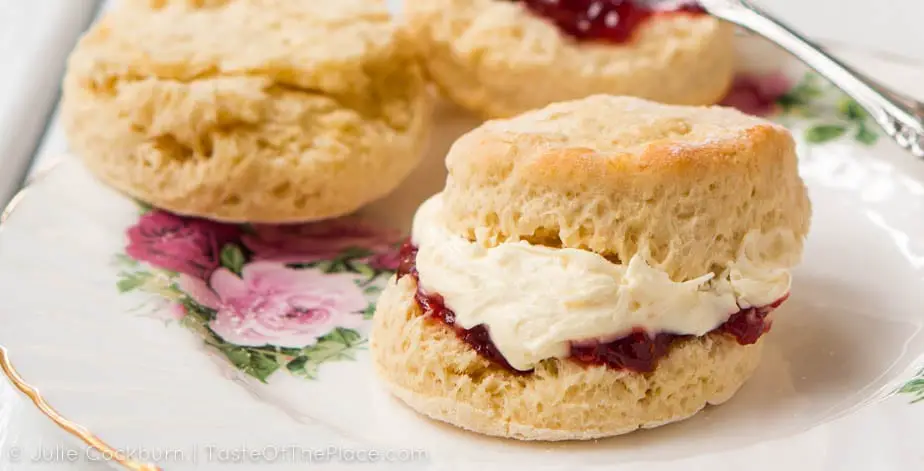
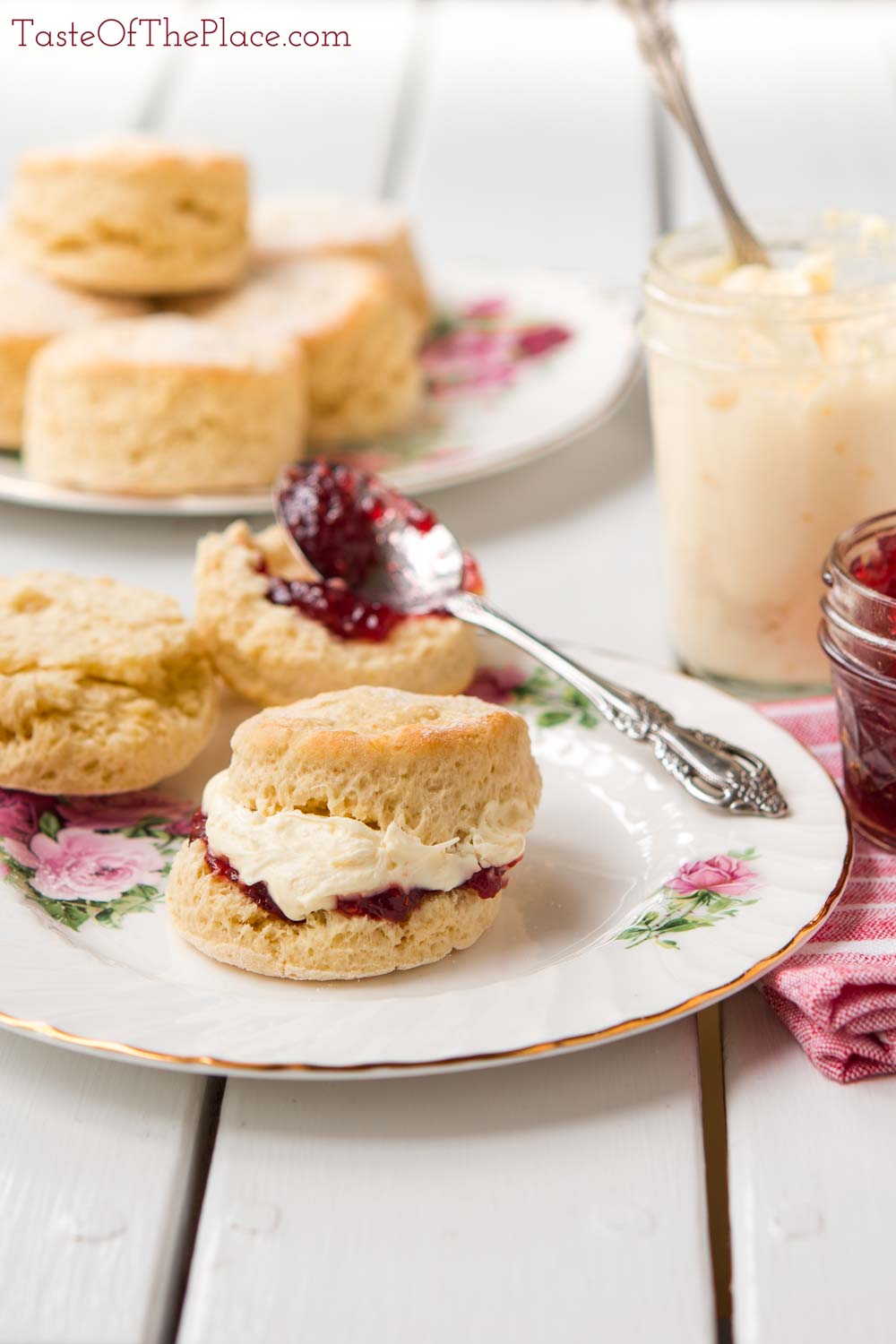
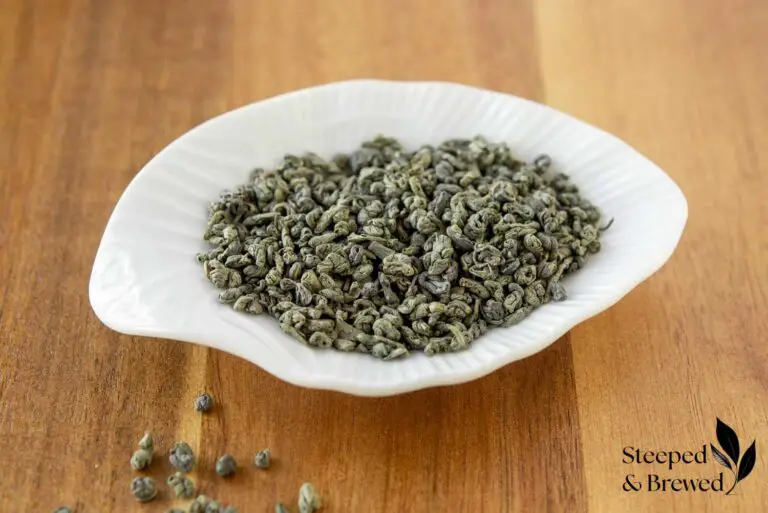
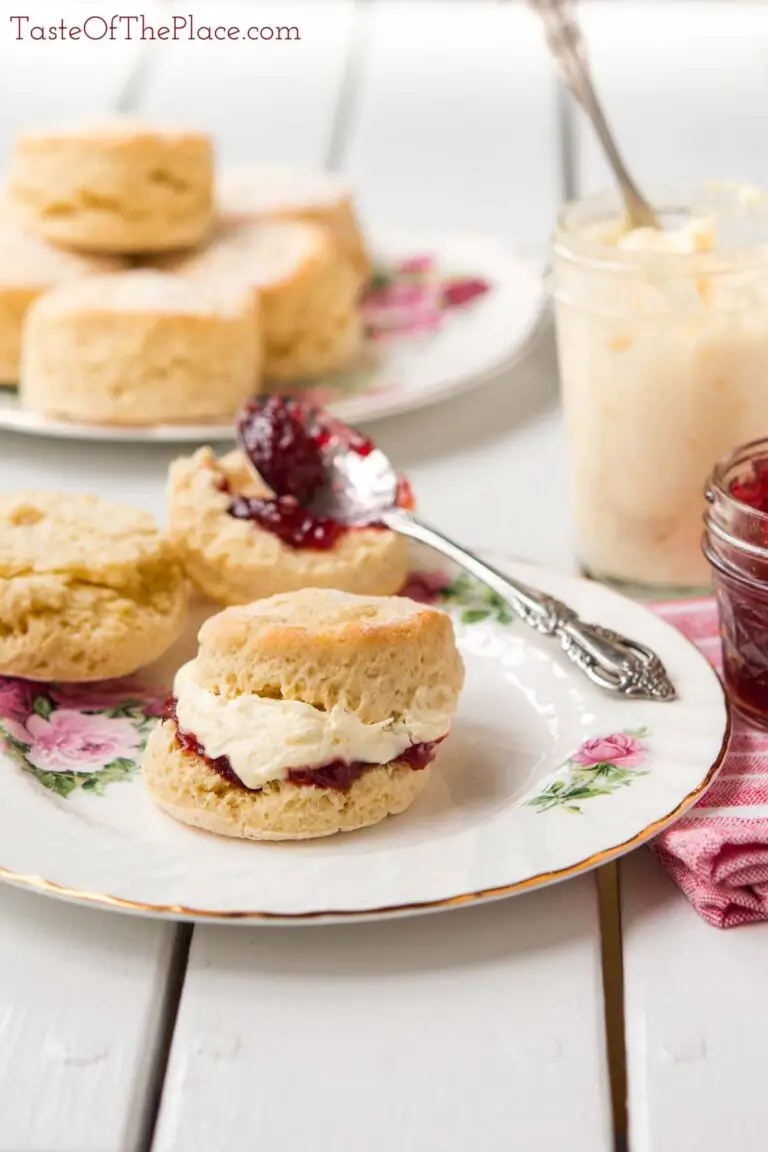
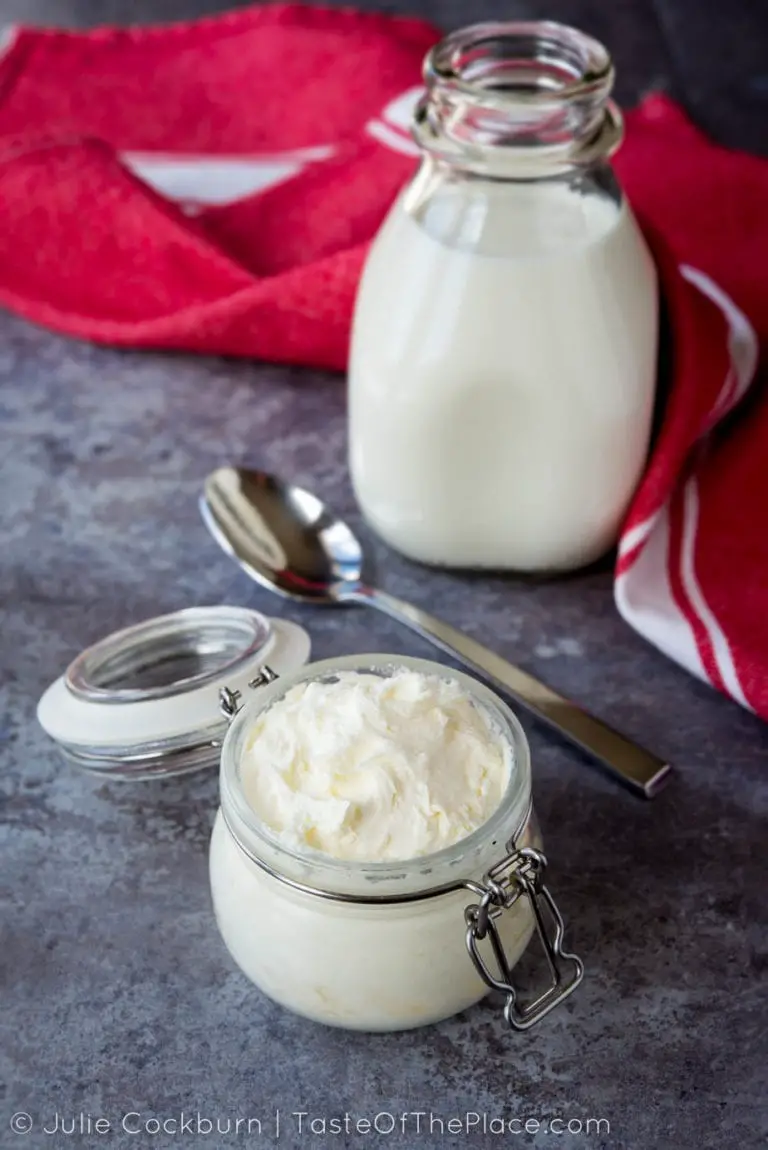

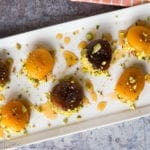

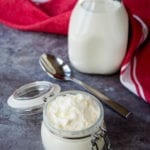








Leave a Reply